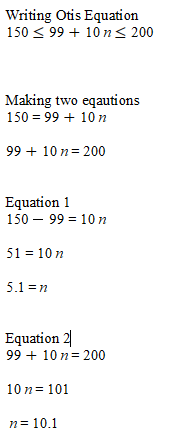Nemanjavuk69
Junior Member
- Joined
- Mar 23, 2022
- Messages
- 71
Dear everyone
I am looking for a theorem, proof, Definition or anything else, which tells me how to find the multiplum
Suppose I have this equation [imath]a=99[/imath]
I need to make [imath]a[/imath] be into the interval [150;200]. Suppose we now get told a number we can add to [imath]a[/imath] as many times we want as long as [imath]a[/imath] is inside the interval [150;200]. This number we get is 10.
We can now construct the following equation [imath]a=99+(10 \cdot n)[/imath] where [imath]n[/imath] is the multiplum of 10.
We are restricted to only allowing [imath]n[/imath] to be of integer type.
My question is, how do we know what [imath]n[/imath] has to be? It is obivious that [imath]n[/imath] can be [6;10]. Is there a way to calculate that [imath]n[/imath] can be in this interval?
Thanks in advance and have a fantastic night/ day forward
I am looking for a theorem, proof, Definition or anything else, which tells me how to find the multiplum
Suppose I have this equation [imath]a=99[/imath]
I need to make [imath]a[/imath] be into the interval [150;200]. Suppose we now get told a number we can add to [imath]a[/imath] as many times we want as long as [imath]a[/imath] is inside the interval [150;200]. This number we get is 10.
We can now construct the following equation [imath]a=99+(10 \cdot n)[/imath] where [imath]n[/imath] is the multiplum of 10.
We are restricted to only allowing [imath]n[/imath] to be of integer type.
My question is, how do we know what [imath]n[/imath] has to be? It is obivious that [imath]n[/imath] can be [6;10]. Is there a way to calculate that [imath]n[/imath] can be in this interval?
Thanks in advance and have a fantastic night/ day forward

